Themed collection Synchrotron Radiation in Art and Archaeology

Synchrotron Radiation in Art and Archaeology
Koen Janssens introduces the Synchrotron themed issue and provides an overview of the 7–10 November 2010 SR2A conference held in Amsterdam, the Netherlands.
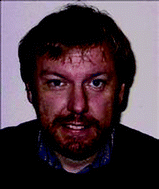
J. Anal. At. Spectrom., 2011,26, 883-884
https://doi.org/10.1039/C1JA90015C
Improved radiographic methods for the investigation of paintings using laboratory and synchrotron X-ray sources
This investigation explored the possibilities of state-of-the-art technologies in order to improve the quality of radiographic images of paintings.
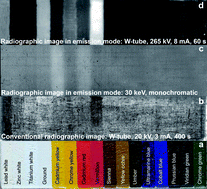
J. Anal. At. Spectrom., 2011,26, 1068-1077
https://doi.org/10.1039/C0JA00242A
Fading of modern Prussian blue pigments in linseed oil medium
The fading of modern laboratory-synthesized and commercial Prussian blue, iron(III) hexacyanoferrate(II), based pigments in a linseed oil medium during exposure to light has been investigated.
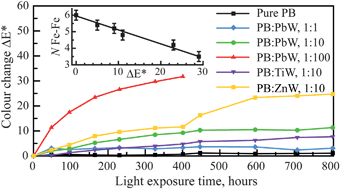
J. Anal. At. Spectrom., 2011,26, 930-941
https://doi.org/10.1039/C0JA00234H
Comparison between TOF-ND and XRD quantitative phase analysis of ancient potteries
A non-invasive time-of-flight neutron diffraction (TOF-ND) analysis has been performed on archaeological pottery fragments from the excavation sites in the “Strait of Messina” area (Sicily, Southern Italy).
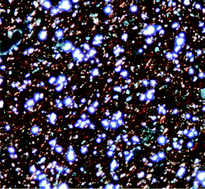
J. Anal. At. Spectrom., 2011,26, 1060-1067
https://doi.org/10.1039/C0JA00224K
Coupling a wavelength dispersive spectrometer with a synchrotron-based X-ray microscope : A winning combination for micro-X-ray fluorescence and micro-XANES analyses of complex artistic materials
Considers the attributes of a polycapillary-based Wavelength Dispersive X-ray Spectrometer, with a particular focus on Cultural Heritage applications.
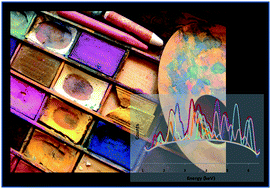
J. Anal. At. Spectrom., 2011,26, 1051-1059
https://doi.org/10.1039/C0JA00217H
Synthesizing lead antimonate in ancient and modern opaque glass
Investigates the evolution of lead antimonate production during different periods of History, highlighting the different production techniques.
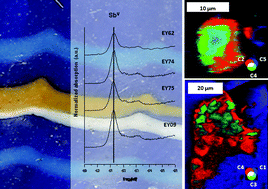
J. Anal. At. Spectrom., 2011,26, 1040-1050
https://doi.org/10.1039/C0JA00251H
A new methodological approach for the chemical characterization of black crusts on building stones: a case study from the Catania city centre (Sicily, Italy)
This article focuses on the use of LA-ICP-MS analysis as a new methodological approach for the chemical investigation of black crusts covering the stone surface of monuments and buildings.
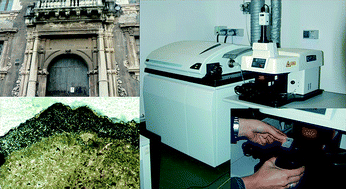
J. Anal. At. Spectrom., 2011,26, 1000-1011
https://doi.org/10.1039/C0JA00226G
Imaging of cultural heritage objects using neutron resonances
A technique called Neutron Resonance Transmission Analysis is presented and applied to archaeological samples and museum objects.

J. Anal. At. Spectrom., 2011,26, 992-999
https://doi.org/10.1039/C0JA00256A
From Koto age to modern times: Quantitative characterization of Japanese swords with Time of Flight Neutron Diffraction
Time of Flight Thermal Neutron Diffraction was used to quantitatively characterize ten Japanese blades.
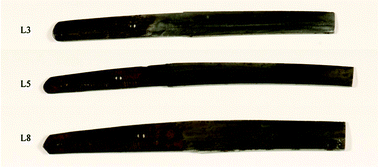
J. Anal. At. Spectrom., 2011,26, 1030-1039
https://doi.org/10.1039/C0JA00238K
Combined neutron and synchrotron X-ray microprobe analysis: attempt to disclose 3600 years-old secrets of a unique bronze age metal artifact
A combined approach of neutron and x-ray micro-beam techniques lifts hidden secrets of a 3600 years old prestigious status symbol.
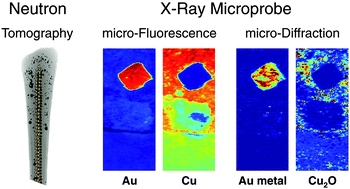
J. Anal. At. Spectrom., 2011,26, 1012-1023
https://doi.org/10.1039/C0JA00262C
First examination of slag inclusions in medieval armours by confocal SR-µ-XRF and LA-ICP-MS
The origin of supposedly Lombard armours can be determined by analysing the micro-inclusions entrapped in their matrix. In this work, the coupling of LA-ICP-MS and confocal SR-µ-XRF permits to highlight the counterfeit.
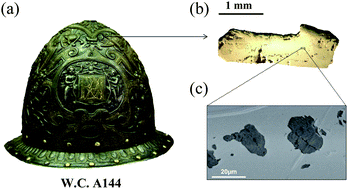
J. Anal. At. Spectrom., 2011,26, 1078-1087
https://doi.org/10.1039/C0JA00261E
Optimization of mobile scanning macro-XRF systems for the in situ investigation of historical paintings
The development of a new scanning macro-XRF instrument and its application to several historical paintings (15th to 19th century) are presented.
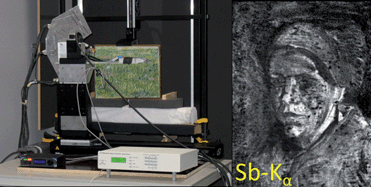
J. Anal. At. Spectrom., 2011,26, 899-909
https://doi.org/10.1039/C0JA00257G
Imaging fossil bone alterations at the microscale by SR-FTIR microspectroscopy
The analysis of fossil bone thin sections by FTIR microspectroscopy allowed the characterization of diagenetic alterations at the histological scale.
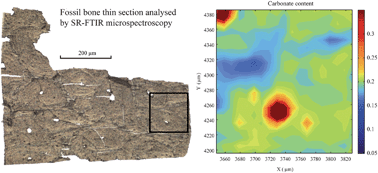
J. Anal. At. Spectrom., 2011,26, 922-929
https://doi.org/10.1039/C0JA00250J
Integrated X-ray and neutron -based analysis of bronze artefacts from the Ligurian settlement of Guardamonte-Monte Vallassa
Integrated neutron-based and X-rays based measurements were performed on bronze archaeological findings form a pre-Roman settlement to investigate their composition in a non-destructive way.
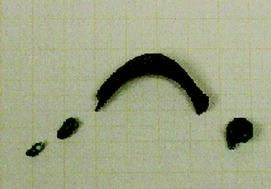
J. Anal. At. Spectrom., 2011,26, 1024-1029
https://doi.org/10.1039/C0JA00259C
High energy X-ray powder diffraction for the imaging of (hidden) paintings
Imaging of pigment distributions in paintings and hidden under paintings by High energy X-ray powder diffraction.
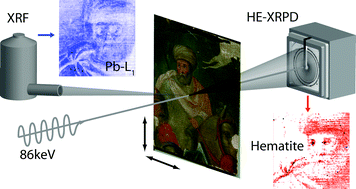
J. Anal. At. Spectrom., 2011,26, 910-916
https://doi.org/10.1039/C0JA00255K
Further metallurgical analyses on silver coins of Trajan (AD 98–117)
A marked decrease in the silver content of the alloy of Trajan's denarii between the years AD 99 and AD 100 could be observed

J. Anal. At. Spectrom., 2011,26, 984-991
https://doi.org/10.1039/C0JA00252F
Reverse engineering the ancient ceramic technology based on X-ray fluorescence spectromicroscopy
To further our understanding of the evolution of ceramic technology, we used a micro-X-ray beam to map the mineralogy and iron valence distribution of ceramic samples.
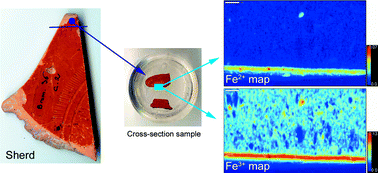
J. Anal. At. Spectrom., 2011,26, 969-976
https://doi.org/10.1039/C0JA00212G
Multi-technique characterization of ancient findings from Gela (Sicily, Italy)
The non-destructive and micro-destructive multi-technique approach used to study ancient Sicilian samples provided information to fully characterize the decorated surface.
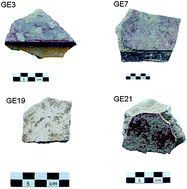
J. Anal. At. Spectrom., 2011,26, 977-983
https://doi.org/10.1039/C0JA00245C
The use of microscopic X-ray diffraction for the study of HgS and its degradation products corderoite (α-Hg3S2Cl2), kenhsuite (γ-Hg3S2Cl2) and calomel (Hg2Cl2) in historical paintings
The use of microscopic X-ray diffraction for the study of HgS and its degradation products corderoite, kenhsuite and calomel in historical paintings.
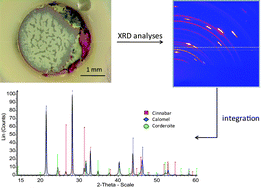
J. Anal. At. Spectrom., 2011,26, 959-968
https://doi.org/10.1039/C0JA00260G
New insights into alloy compositions: studying Renaissance bronze statuettes by combined neutron imaging and neutron diffraction techniques
The material composition and crystalline structures of Renaissance bronze sculptures have been analyzed by combining Neutron Imaging and Neutron Diffraction techniques using SScanSS, showing that these objects can be magnetic.

J. Anal. At. Spectrom., 2011,26, 949-958
https://doi.org/10.1039/C0JA00243G
Protrusions in a painting by Max Beckmann examined with confocal μ-XRF
The aim of this study is the investigation of the chemical reactions during the formation of protrusions in a painting by Max Beckmann.
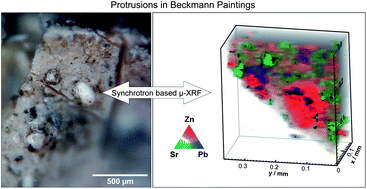
J. Anal. At. Spectrom., 2011,26, 942-948
https://doi.org/10.1039/C0JA00178C
Casting technology of Renaissance bronze statuettes: the use of TOF-neutron diffraction for studying afterwork of Renaissance casting techniques
The finishing techniques of Renaissance bronze statuettes are examined using Time of Flight Neutron Diffraction in order to prove that bronze sculptures could be cast without afterworking using chasing tools.
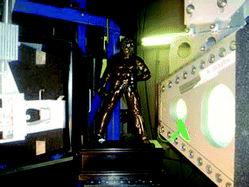
J. Anal. At. Spectrom., 2011,26, 892-898
https://doi.org/10.1039/C0JA00235F
X-ray absorption spectroscopy study of the various forms of phosphorus in ancient iron samples
Ancient phosphorus-containing iron-based alloys are often reported to be strongly resistant toward corrosion. In this study, micro-XANES spectra highlight phosphorus distribution and speciation in two ancient iron-based samples.
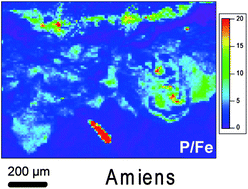
J. Anal. At. Spectrom., 2011,26, 885-891
https://doi.org/10.1039/C0JA00247J
A study on gold and copper provenance for Romanian prehistoric objects using micro-SR XRF
A provenance study for prehistoric gold and bronze artifacts in comparison with Au and Cu geological sources, using micro-SR XRF elemental analysis.
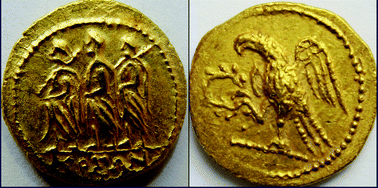
J. Anal. At. Spectrom., 2011,26, 917-921
https://doi.org/10.1039/C0JA00215A
The darkening of zinc yellow: XANES speciation of chromium in artist's paints after light and chemical exposures
Color changes in artists paints containing Zinc yellow are associated with the reduction of Cr(VI) to Cr(III).
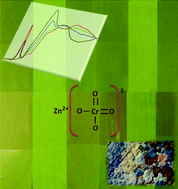
J. Anal. At. Spectrom., 2011,26, 1090-1097
https://doi.org/10.1039/C0JA00151A
SRXRF-measurements at non-planar objects: automatic determination of the angle of incidence of the exciting X-ray
Non-planar sample shapes must be expected especially for art and cultural heritage objects. The use of a microscope and an easy algorithm allows the fast determination of the existing geometry.
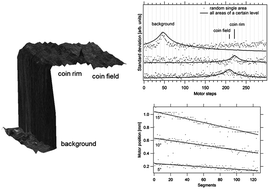
J. Anal. At. Spectrom., 2011,26, 1088-1089
https://doi.org/10.1039/C0JA00237B
About this collection
In this specially themed issue of JAAS, a collection of 25 papers has been gathered that were submitted as a result of an oral or poster contribution at the SR2A-2010 (Synchrotron Radiation in Art and Archaeology) conference. This meeting was organized by Koen Janssens (University of Antwerp, Belgium), Joris Dik (Technical University of Delft, Netherlands), Robert Van Langh (Rijksmuseum Amsterdam, Netherlands) and Janneke Ottens (Institute for Cultural Heritage, Amsterdam, Netherlands). The conference took place from 7–10 November 2010, and the venue of the meeting was the van Gogh museum, located at the Museum Square in central Amsterdam.